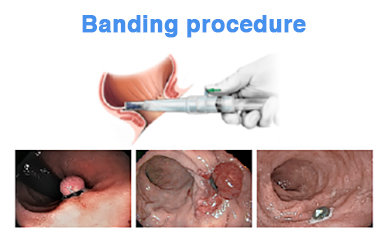Procedure for Prolapse & Hemorrhoids - Dr. Jaisingh Shinde
P.P.H. is also commonly referred to as a stapled hemorrhoidectomy, stapled hemorrhoidopexy or circumferential mucosectomy. This treatment option is the most commonly used surgical remedy for third-degree hemorrhoids. P.P.H. may also be used in cases where medical management has failed in stage two diseases, and is also used in stage four diseases. Unlike a traditional hemorrhoidectomy, P.P.H. does not remove the entire hemorrhoid. Rather, this procedure removes the abnormal portion of the hemorrhoid while returning a portion of the hemorrhoid to its prior normal anatomic location within the anorectum. It is thought that this residual replaced hemorrhoidal tissue will continue to act as a cushion for bowel movements.
P.P.H. is not used as a treatment for external hemorrhoids. However, as a potential added benefit, performance of a P.P.H. may cause the external hemorrhoids to return to the anorectum with the internal hemorrhoids.
Patients are advised to discontinue all medications which are considered to be blood thinners, non-steroidal anti-inflammatory pain medications, certain herbs and aspirin-containing compounds eight days prior to the procedure. It is mandatory that patients discuss all medications with their physician prior to undergoing a P.P.H.
The procedure requires between 30 to 45 minutes to perform, and is associated with less postoperative discomfort when compared to a traditional hemorrhoidectomy. Patients are usually able to return to work or other activities of daily living much sooner compared with a traditional operation.
P.P.H. is performed under intravenous anesthesia in the outpatient setting of a surgical center or hospital. A special hemorrhoidal stapler is used to return the hemorrhoidal tissue into the rectum. The stapler is gently inserted into the anorectum. The excess hemorrhoidal tissue is drawn into the stapler. The stapler is fired, the excess tissue is removed and the lining is automatically reapproximated with titanium staples.
Patients usually return home within an hour after completion of the procedure. Patients are encouraged to eat a normal diet to promote a normal bowel movement so as to avoid narrowing of the anal opening. This is important, as any anal operation can cause a stricture unless the anal opening is used regularly to promote normal healing. Patients may return to work as soon as is practical in the recovery period.

